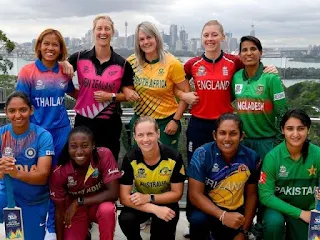Cricket, often dubbed the 'gentleman's game,' has witnessed a transformative journey, transcending gender boundaries to embrace women's participation. The history of women's cricket is a captivating narrative that unfolds the evolution of this sport and the trailblazing women who defied societal norms to carve their space on the cricketing field.
The Genesis: Late 18th Century
The roots of women's cricket can be traced back to the late 18th century in England. Initially, cricket was perceived as a male-dominated sport, played predominantly in schools and clubs. However, women's enthusiasm for the game could not be stifled. Historical records unveil snippets of women engaging in cricket matches during this era, although the participation was informal and sporadic.
Early Challenges: 19th Century
The 19th century witnessed sporadic efforts to formalize women's cricket. The challenges were immense; societal norms were deeply ingrained, restricting women's participation in sports. However, a few visionary women defied the norms, laying the groundwork for the future. In 1887, the first recorded women's cricket match took place between White Heather and Alexandra Park in Crouch End, London. This marked a pivotal moment, igniting the spark for organized women's cricket.
Pioneers of Change: The Early 20th Century
As the 20th century unfolded, so did the aspirations of women to play cricket at a competitive level. The Women's Cricket Association (WCA) was founded in England in 1926, playing a pivotal role in shaping the landscape of women's cricket. The association laid down formal rules and organized regular competitions, providing a structured platform for women cricketers.
International Endeavors: Post World War II
The aftermath of World War II witnessed a surge in women's cricket globally. Countries like Australia, New Zealand, and South Africa embraced the sport, forming their national women's teams. The first official women's international cricket match was played in 1934 between England and Australia, setting the stage for future international competitions.
The Journey to Recognition: Late 20th Century
Despite the strides, women's cricket faced persistent challenges, including limited recognition and financial support. The 1970s and 1980s marked a turning point with the formation of the International Women's Cricket Council (IWCC) in 1973, working towards promoting and organizing international women's cricket. The inaugural Women's World Cup in 1973 in England was a watershed moment, providing a global platform for women cricketers.
Global Expansion: 21st Century
The 21st century heralded unprecedented growth for women's cricket. The International Cricket Council (ICC) took charge of the women's game in 2005, further amplifying its global reach. T20 cricket injected a new wave of excitement, with the introduction of the ICC Women's World Twenty20 in 2009, attracting a massive audience.
Empowering Icons: Impactful Women in Cricket
The evolution of women's cricket is intertwined with iconic players who shattered glass ceilings. Names like Belinda Clark, Charlotte Edwards, Mithali Raj, and Meg Lanning have become synonymous with excellence, inspiring generations of aspiring women cricketers.
Current Landscape: A Glance into the Present
Women's cricket is now a powerhouse of talent, boasting competitive leagues, growing viewership, and increased investment. Tournaments like the Women's Big Bash League (WBBL) in Australia and the Kia Super League in England have become annual fixtures, showcasing the global appeal of women's cricket.
Conclusion
The journey of women's cricket is a testament to resilience, passion, and a relentless pursuit of equality. From informal matches in the 18th century to the grand stages of international cricket, women cricketers have navigated challenges, transforming the sport into a global spectacle. The future holds the promise of continued growth, with women's cricket poised to scale new heights and inspire generations to come.

